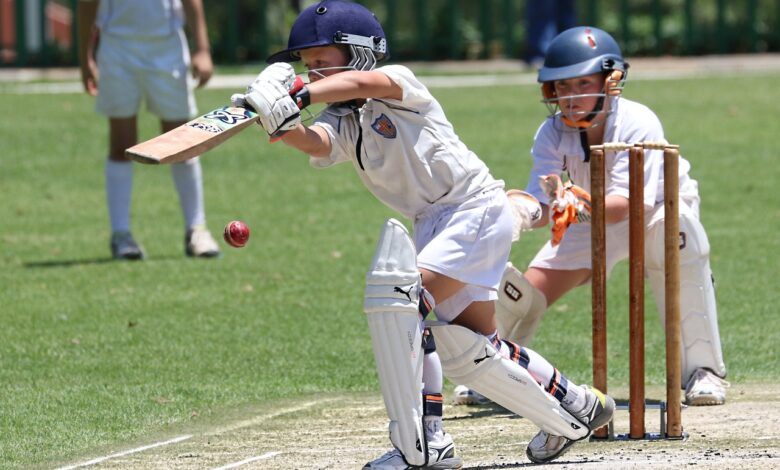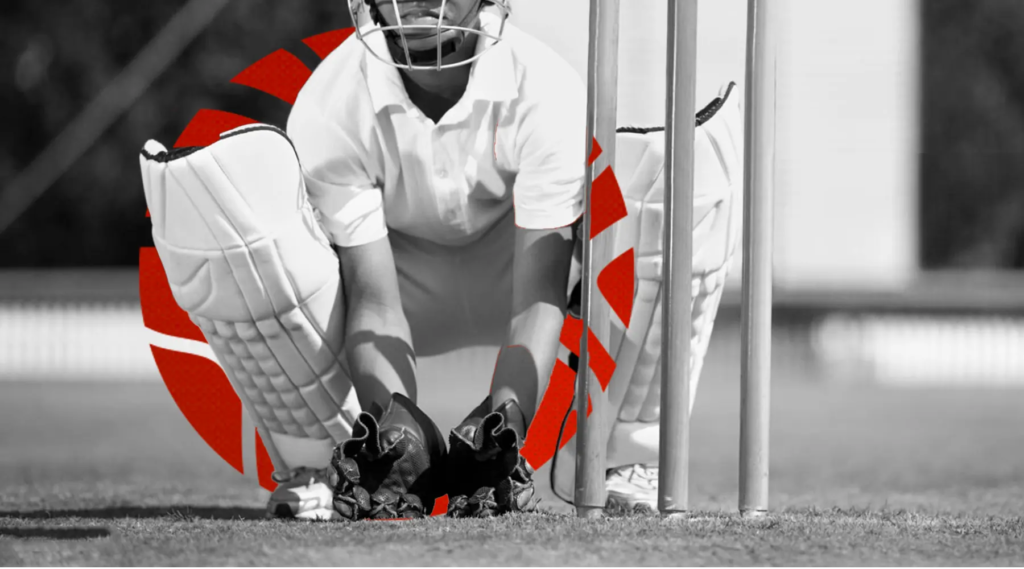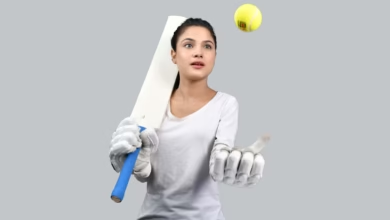Everything You Need to Know About Cricket Pads: A Guide for Beginners

Cricket pads are an essential piece of equipment for every cricketer. They are worn on the legs to protect the shin area from the impact of the ball. Whether you’re a beginner or a seasoned player, wearing cricket pads helps keep you safe during the game. These pads are usually made from lightweight materials that provide both comfort and protection, allowing players to move freely while staying safe.
When you start playing cricket, it’s important to choose the right pair of cricket pads. The right pads should fit well and protect you without restricting your movement. In this guide, we will explore the different types of cricket pads, how to choose the right one for you, and tips on how to care for them to make sure they last longer.
What Are Cricket Pads and Why Are They Important?
Cricket pads are a crucial part of any cricketer’s gear. They are worn on the legs to protect players from being hurt by the ball. The pads cover the shin area, which is often at risk when the ball is bowled quickly. Cricket pads help reduce the chances of injury, making the game safer for players of all levels.
The main purpose of cricket pads is to keep players safe while they are batting or wicket-keeping. They are usually made of soft and light materials like foam, but they are tough enough to handle the impact of the ball. Without proper protection, players could easily get hurt, so wearing cricket pads is very important.
These pads are not just for protection; they also provide comfort during long matches. Players can move around easily because the pads are designed to allow flexibility. Whether it’s batting or fielding, cricket pads help players feel more confident on the field.
How to Choose the Right Cricket Pads for You
Choosing the right cricket pads is important for comfort and safety. The best pads will fit your legs well and give you enough protection. The first thing to think about is the size of the pads. You should select pads that fit your height and leg size. If they are too small, they won’t protect you enough. If they are too big, they may make it harder to move.
Here are some tips to pick the right pads:
- Size: Make sure the pads cover your knees and shins properly. They shouldn’t be too tight or too loose.
- Material: Look for pads made of high-quality materials like foam or lightweight plastic. These materials protect while keeping the pads light.
- Comfort: Try wearing them before buying to make sure they feel comfortable. You should be able to move your legs easily.
Different Types of Cricket Pads for Batsmen and Wicket-Keepers

There are two main types of cricket pads: one for batsmen and one for wicket-keepers. The pads for batsmen are larger and thicker because they need more protection against fast balls. These pads usually cover the shin, knee, and upper leg.
On the other hand, wicket-keeper pads are smaller and lighter, allowing the keeper to move quickly and crouch down. Wicket-keeper pads also protect the thigh and shin, but they are designed for agility, not just protection.
Batsman Pads:
- Larger and bulkier for maximum protection.
- Provides coverage from knee to shin.
Wicket-Keeper Pads:
- Smaller, lightweight, and flexible.
- Designed for easy movement while keeping the wicket.
How to Wear Cricket Pads for Maximum Protection and Comfort
To get the best out of your cricket pads, it’s important to wear them properly. Follow these steps to ensure a snug fit and full protection:
- Place the pads on your legs: Position the pads so that they cover your knee and shin.
- Secure the straps: Tighten the straps around your legs. Make sure they are not too tight or loose.
- Test your movement: Once the pads are on, walk around and try moving your legs to check if they are comfortable.
Tips for Better Fit:
- Choose pads with adjustable straps for a custom fit.
- Always check that the knee guard is aligned with your knee for extra protection.
How to Take Care of Your Cricket Pads to Make Them Last Longer
Taking care of your cricket pads will help them last longer and stay in good condition. After every match, make sure to clean them. Wipe them with a soft cloth to remove dirt and sweat.
Also, store your pads in a cool, dry place. Avoid leaving them in hot areas because the materials can get damaged. To prevent the straps from wearing out, don’t pull them too hard when adjusting them.
Why Cricket Pads Are Essential for Injury Prevention
Cricket pads are designed to protect players from the high-speed impact of the ball. Without proper protection, players can get hurt, especially when facing fast bowlers. The ball can travel at speeds of over 90 miles per hour, and a hit to the shin or knee can cause serious injury. Cricket pads help minimize the risk of bruises, cuts, and even fractures.
The key areas of the body that are protected by cricket pads include the knee, shin, and thigh. These are the most vulnerable parts of the body when batting or wicket-keeping. For batsmen, being hit on the lower leg by a fast delivery can be painful and dangerous. For wicket-keepers, protecting the legs is just as important since they are in close contact with the ball.
Wearing well-fitted cricket pads ensures that these vital areas are shielded from potential harm. They provide a barrier that absorbs the force of the ball, preventing direct impact with the body. Whether you’re facing a fast bowler or fielding close to the batsman, the right protection is necessary to keep injuries at bay.
How to Select Cricket Pads Based on Your Playing Style
When selecting cricket pads, it’s important to think about your playing style and needs. Different players have different preferences based on their role in the game, so choosing the right pad can help you perform better.
Batsmen, for instance, need pads that offer extra protection on the thigh and knee areas, especially when facing fast bowlers. These pads should be thicker and more durable. On the other hand, if you’re a wicket-keeper, you’ll need lighter, more flexible pads that allow for quick movement. Wicket-keeper pads are less bulky and designed for agility rather than full protection.
Cricket pads also come in different designs, such as traditional or modern styles. Traditional pads offer maximum protection, while modern pads might be lighter but just as effective. The decision depends on what you feel comfortable wearing and what suits your playstyle. Consider the type of cricket you are playing—Test cricket or T20—because some pads are more suited for longer formats, while others work better in shorter, faster games.
The Importance of Proper Maintenance for Cricket Pads

To ensure your cricket pads last as long as possible, proper maintenance is key. After every match, clean the pads to remove dirt and sweat. Use a soft cloth to wipe down the surface, and never use harsh chemicals that could damage the material. This will keep the pads looking fresh and prevent any build-up that could affect their performance.
Another important part of maintenance is storing your pads properly. Don’t leave them in hot, damp places like the back of a car or a closet with no airflow. Instead, hang your pads in a cool, dry space where they can maintain their shape. Keeping them in a protective bag can also help prevent unnecessary damage.
Finally, check the straps and other fastenings regularly. If they start to wear out, it’s important to replace them before they break during a game. Ensuring your cricket pads are in good condition will give you the best protection and comfort while you play.
Conclusion
Cricket pads are an essential part of a cricketer’s gear. They provide protection from the impact of the ball, improve comfort, and help prevent injuries during the game. Whether you’re a batsman, wicket-keeper, or a beginner, finding the right pair of pads for your playing style and needs is crucial.
Remember to take good care of your pads, make sure they fit properly, and maintain them for long-lasting use. With the right cricket pads, you can stay safe, comfortable, and confident on the field.
FAQs
Q: What are cricket pads used for?
A: Cricket pads are worn by batsmen and wicket-keepers to protect the legs, knees, and shins from the impact of the cricket ball.
Q: How do I choose the right size of cricket pads?
A: To choose the right size, measure the length of your leg from the ankle to the mid-thigh and select pads that fit comfortably, providing protection without restricting movement.
Q: Can cricket pads be used for both batting and wicket-keeping?
A: Yes, but batting pads are typically thicker and larger, while wicket-keeping pads are lighter and more flexible to allow quick movements.
Q: How often should I replace my cricket pads?
A: Replace your cricket pads when the padding is worn out or damaged, or if they no longer provide adequate protection or comfort.
Q: Are there different types of cricket pads for different formats?
A: Yes, pads for Test cricket are usually heavier and offer more protection, while pads for limited-overs formats like T20 are lighter and designed for agility and quick movement.




